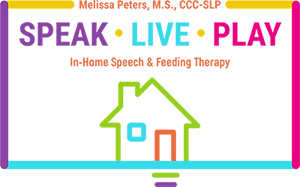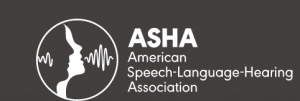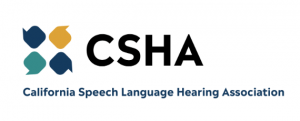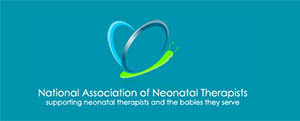Motor Speech Disorders in Adults
Motor speech disorders affect a person’s capability to produce the sound that forms words. These types of speech disorders include dysarthria and apraxia. While there are various causes of motor speech disorders, the leading causes include brain injuries, autism, muscle weakness, and degenerative diseases. Motor speech disorders can affect individual self-esteem and overall quality of life.
For years, Speak Live Play therapists have been helping people suffering from motor speech disorders. Speak Live Play pathologists offer customized services dedicated to improving the lives of the clients and their families. The SLPs use an integrative approach that involves various therapeutic techniques customized to meet the patient’s needs.
What Are Motor Speech Disorders?
Speech motor planning is the ability to develop an idea, plan how to express it, and finally speak it out. While the process seems straightforward, it involves several tone muscles, and the way we express the idea depends on how the brain sends the signal to the relevant muscles. The muscle tone usually refers to the muscles and strength that require moving the tongue, jaw, lips, and other muscles needed to speak.
Motor speech disorders are present when an individual struggles to produce speech because of issues with motor planning or problems of the muscles responsible for producing sound when we talk. The main types of motor speech disorders include apraxia and dysarthria.
What is dysarthria?
Also referred to as slurred speech, dysarthria is slow, distorted speech that results from weakness, paralysis, or incapability to control the speech muscles. The primary dysarthria causes include stroke, traumatic brain injuries, degenerative brain disorders, and brain tumors.
What is apraxia?
Apraxia of speech is the incapability of making voluntary movements such as speaking. The sufferer usually demonstrates normal muscle function but is unable or struggles to form the words.
Speech Changes observed in individuals with motor speech disorders
A person suffering from motor speech disorder may appear to want to form words but is incapable of doing so. The individuals may also demonstrate slurred or hard-to-understand speech. In most cases, the person may form one word correctly, but it becomes difficult to understand as the statement gets longer. The motor speech disorder symptoms vary widely depending on the disorder severity and the cause. Individuals with motor speech disorders may face one or a combination of the below symptoms.
- Repeating or prolonging sounds
- Speaking very softly
- Struggling to say the correct word or sound
- Adding syllables or sounds to words
- Altering sounds
- Having trouble speaking words correctly
- Reorganizing syllables
- Speaking with a raspy voice
How can Speech Therapy Help individuals suffering from Motor speech disorders?
So-Cal Speech and Swallow therapists start by doing a comprehensive speech and language evaluation to determine the severity of the motor speech disorders. In most cases, individuals with complex neurological conditions have a motor speech disorder and other communication impairments.
At the So-Cal therapy center, our speech-language pathologist works with the patients experiencing the motor speech disorder to evaluate their nature, severity and come up with a customized, comprehensive treatment that improves speech ability and communication skills.
Apraxia
Apraxia of speech (AOS) develops when there is damage to the brain part that controls how we speak. Individuals suffering from AOS often have trouble sequencing the sounds in words. While these individuals know what the word they need to say, their brain has trouble coordinating the muscles necessary for forming the words.
Treatment
So-Cal SPL starts by doing a comprehensive evaluation of the individuals. The results for the assessment determine the severity and nature of the conditions. The speech-language pathologist works with people with the disorder and helps them improve the speech ability. The treatment often involves retraining the speech muscles to produce the sound correctly and sequencing them into words. These exercises are designed to enable the individual to repeat vowels, syllables, words, and phrases repeatedly. The therapist will also train the person to slow their speech down to produce all the sounds necessary.
Dysarthria
Dysarthria disorder occurs when the face, mouth, and respiratory muscles become weak or fail to move after a brain injury or stroke. As mentioned, the severity and type of this disorder depend on the affected brain part.
Treatment
So-Cal therapists have broad experience in this field and use evidence-based techniques to treat the disorder. The evaluation process involves looking at the lips movement, face, and tongue movement. The expert will also evaluate the breath support for speech and the voice quality. The symptoms in patients suffering from dysarthria are broad. The treatment is usually customized to cater to the specific symptoms to improve the individual’s communication abilities.
It is important to note that the primary treatment for motor speech disorders usually includes speech therapy exercises that strengthen the muscles responsible for producing the speech sounds. Let us discuss some of the treatment options availed by So-Cal speech and swallowing therapists for Motor speech disorders.
Target selection
Target selection treatment helps the person suffering from the disorder to familiarize himself with specific speech patterns. The therapy targets practicing on the complex sounds or words that trigger the speech inconsistency.
Contextual utilization
The therapist uses this approach to teach the patient how to recognize the speech sounds in various syllable-based contexts. People suffering from motor speech disorders often struggle when it comes to words that have more vowels. The SPL will help the individual practice the vowels, words, and phrases, helping them mention the words quickly.
Contrast therapy
As the patient treatment progresses, the SPL will introduce contrast therapy. This therapy usually involves training the individual on saying word pairs with one or more speech sounds that are different. For example, the word pair may be such as beat and feet.
Oral-motor therapy
This approach usually focuses on improving motor control, muscle strength, and breath control. These exercises’ main goal is to help the individual develop fluency, allowing the individual to produce a smooth speech with a more natural sound. The exercise also includes repetitive facial movement that improves the oral musculature range of motion and strength.
Over-articulation and phrasing
The therapy usually involves teaching the patient on the cheeks, tongue, and lips’ exaggerated movements, allowing making short speech sounds. Phrasing exercises involve teaching the patient to slow down the speech rate by producing a limited number of words per breath.
Goals for Motor speech disorders Treatment
As mentioned, dysarthria symptoms vary depending on the damaged brain damage and type of dysarthria. The most common symptoms include slurred speech, altered speech quality, whispered speech, inability to move the tongue, and other facial muscles. On the other hand, the apraxia symptoms include inconsistent speech sound error, inability to repeat words accurately, and struggling to produce sound.
The symptoms vary from one person to the other. As such, the SLPs at So Cal therapy center usually develop a specialized treatment program to cater to each patient’s unique needs. The main goals for the So Cal speech-language pathologists are to achieve the following milestones.
- Improving the breath support, allowing the individual to speak more loudly
- Improving the muscle strength that constitutes the movement of the lip, mouth, and the jaw
- Helping the individual to improve articulation, ensuring the speech is more precise.
- Teaching the caregivers and family members strategies that ensure easy communication with the patient suffering from motor speech disorders.
- Helping the individual to say the sounds and words correctly. The SPLs will teach the individual how to plan the movement needed to say the words and move at the correct time.
Why So Cal Speech and Swallow?
A speech-language therapist will be a big part of your life as they help you communicate better with your family and friends. As such, it is crucial to find the right fit. At Speak Live Play, we offer consultation, comprehensive screening, and treatment for a person suffering from motor speech disorders. We take pride in being a specialized family-oriented clinic with broad experience in Speech and swallowing disorders.
Our sole mission is to provide expert speech-language services at Speak Live Play, emphasizing caregiver education and training. We help the patient improve communication and train the caregiver and family on how they can communicate effectively with their loved one.
Sources H2
- https://www.cvmc.org/departments-programs/rehabilitation-therapy/speech-language-pathology/motor-speech-therapy
- https://www.sciencedirect.com/topics/medicine-and-dentistry/motor-speech-disorders
- https://www.choc.org/programs-services/rehabilitation/frequently-asked-questions-motor-speech-disorders/
- https://www.mwuclinics.com/illinois/services/specialty/speech-language/motor-speech-disorders
- https://www.asha.org/public/speech/disorders/childhood-apraxia-of-speech/



